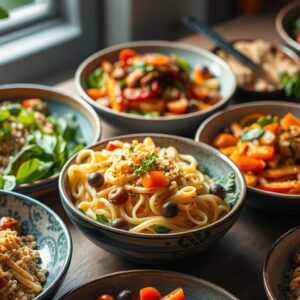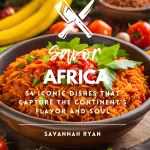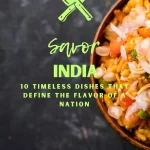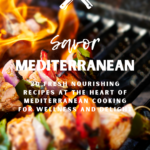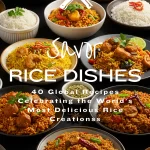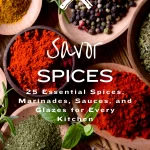Cookbooks are a window into different cultures through food. Our collection has 134 dishes, two from each of 67 countries. You can try Italy’s Pizza Margherita, France’s Coq au Vin, and Japan’s Sushi.
Each recipe keeps traditional methods but uses U.S. ingredients. This makes it easy for home cooks to enjoy global flavors.
Explore the art of Spain’s Paella, India’s Butter Chicken, and Mexico’s Mole Poblano. These recipes show Japan’s seafood skills or Thailand’s flavor balance. Making Germany’s Potato Dumplings or Brazil’s Feijoada is like telling a story of heritage and community.
We made these recipes easy to follow, keeping cultural authenticity. From Ethiopia’s Injera to Vietnam’s Pho, every dish celebrates diversity. Let’s turn your kitchen into a world travel destination.
The Art and Science of Mastering Cookbook Recipes
Mastering cookbook recipes is a mix of precision and creativity. Start with the basics like knife skills and managing heat. These skills make any dish stand out. Seasoning is crucial: fresh herbs, spices, and acids add depth while honoring the recipe’s roots.
Even simple recipes benefit from understanding how ingredients work together. This is true whether you’re making a stir-fry or a complex curry.
Common challenges? Don’t be afraid to make substitutions. Swap lemongrass for ginger or adjust spice levels to your liking. Baking requires science, but everyday cooking allows for flexibility.
Always taste as you go. Small changes in seasoning can make a big difference. For tips, check out “Don’t Be Afraid of Seasoning”, which simplifies flavor balancing.
Start with trusted guides. “Salt, Fat, Acid, Heat” teaches flavor basics, while “The Food Lab” explains technique. Classic books like “Mastering the Art of French Cooking” are also key for learning the basics.
Libraries offer free access to these resources, making learning easy. Begin with small batches and don’t be afraid to adjust seasoning to your taste.
Practice builds confidence. Start with simple recipes and then move on to more complex ones. Remember, even top chefs tweak recipes. Your kitchen is a place to experiment and learn. With patience and curiosity, every dish is a step towards becoming a better cook. Happy cooking!
Why Global Cuisine Has Transformed American Kitchens
Cookbook recipes were once far away, for adventurous travelers or fancy restaurants. Now, they’re common in home kitchens. This change began years ago but sped up with global flavors becoming easier to find.
Julia Child’s *Mastering the Art of French Cooking* in 1961 opened doors for American cooks. Her TV show made cooking seem like a shared skill, not a secret art.
Today, kitchens buzz with dishes like Thai curries, Mexican tacos, and Italian pastas. These were once rare but now are everyday meals. Social media and food influencers made these recipes common, mixing tradition with local tastes.
Over 75% of U.S. home cooks now look for fresh ingredients, inspired by Julia’s focus on quality. Culinary schools, influenced by her, teach techniques that let beginners tackle global flavors with confidence.
Sharing recipes brings people together. Vancouver’s food scene shows this, with diverse ingredients symbolizing unity. Through cookbooks and online communities, home chefs mix dishes like ramen or Noche Buena feasts, blending heritage with personal style.
This change is more than just about food; it’s about celebrating shared human experiences. As cooks, we’re part of a global story, one plate at a time.
Essential Ingredients for Authentic International Cooking
Having a well-stocked pantry is crucial for making cookbook recipes that taste authentic. Start with basics like olive oil and aromatics like garlic and onions. For dishes from around the world, spices like cumin, turmeric, and paprika are essential.
Think about what each region needs. Mediterranean cooking calls for balsamic vinegar and feta. Asian dishes require fish sauce, soy sauce, and sesame oil. Latin American food loves smoked paprika and annatto.
Choose the best ingredients you can find. Use real vanilla extract and dark chocolate (60-70%) for richer flavors. Keep yeast in the freezer, store spices in airtight containers, and use up canned tomatoes like San Marzano.
Knowing when to substitute ingredients is also important. Use coconut milk instead of dairy in curries, or cornstarch for thickening. Special items like panko breadcrumbs or miso paste can make a big difference. Look for authentic ingredients at ethnic markets or online. With these basics, even beginners can make delicious dishes from cookbook recipes.
Best Cookbook Recipes for Beginners to Global Cooking
Starting global cooking doesn’t need fancy markets or hard skills. Our top best cookbook recipes are easy for anyone to try. “Savor The World Global Bites” by Savannah Ryan makes dishes like Japanese miso soup or Italian bruschetta simple. It uses common items like soy sauce, garlic, and olive oil.
These easy cookbook recipes are clear, with step-by-step photos and tips for finding ingredients. This makes cooking fun and accessible.
Start with Japanese sushi rolls using rice, nori, and fresh veggies. No raw fish is needed. Italian classics like tomato sauce or polenta show how simple ingredients can create rich flavors.
Mexican dishes like guacamole or enchiladas let you play with spices safely. All recipes are quick, with prep times under 30 minutes. They also list essential tools like a skillet or mortar pestle.
Pair these dishes with wine or sides from the same book to boost your confidence. For basic skills, check out “How to Cook Everything” by Mark Bittman or “The Art of Simple Food”. These books turn cultural dishes into easy meals, proving global cooking is just a trip to the grocery store away.
The Story Behind Iconic Dishes from Five Continents
Every dish has a story of history, migration, and cultural exchange. From Africa’s 55 nations to bustling Asian markets, these popular cookbook recipes show more than ingredients. They reflect traditions. Take Savor Africa: 54 Iconic Dishes That Capture the Continent’s Flavor and Soul, which tells stories like Ethiopia’s Doro Wat. This dish is filled with centuries of spice trade and communal dining rituals.
Thai Tom Yum Soup’s fiery taste shows Southeast Asia’s mix of colonial and indigenous flavors. India’s biryani tells of Mughal influence and cooking techniques passed down through generations. These recipes are more than meals—they are living history. Nigel Slater’s Ripe and Tender show how seasonal ingredients shape British tables, like West Africa’s jollof rice evolved across coastal regions. Even modern places like Dubai’s 22,000 sq ft African dining hall show these traditions are alive today.
Understanding these stories makes cooking a bridge between cultures. Whether mastering Thai lemongrass pastes or exploring Rwanda’s culinary revival, every recipe connects us to centuries of human experience. By discovering these stories, we turn kitchens into classrooms. Every meal becomes a celebration of global heritage.
Healthy Cookbook Recipes That Don’t Sacrifice Authentic Flavor
Healthy cookbook recipes don’t have to taste bland. Vietnamese cuisine is a great example of balancing flavors. It uses fresh herbs and lean proteins in dishes like pho and spring rolls.
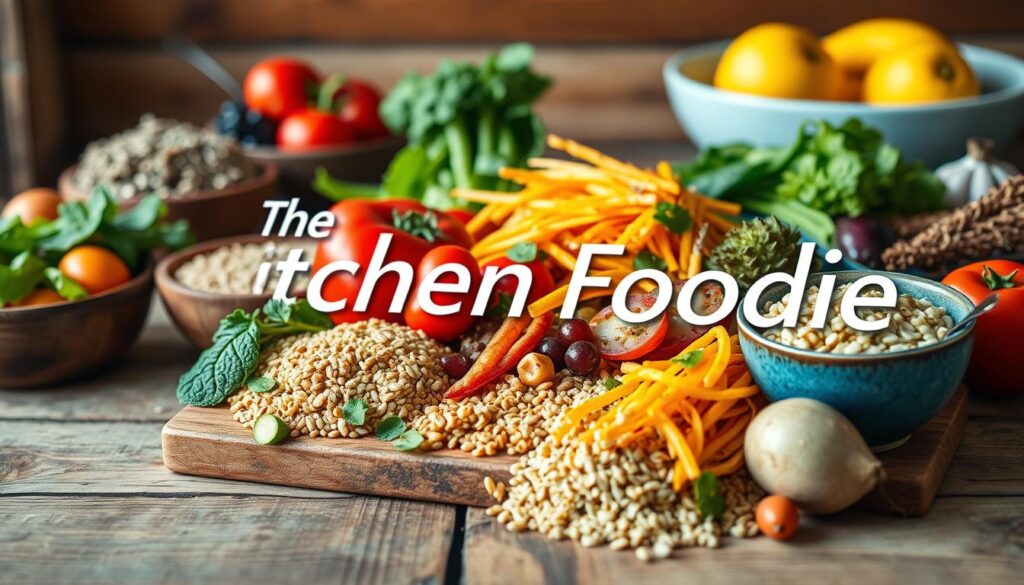
Look to global traditions for inspiration. Japan’s miso-glazed salmon and Mediterranean lentilte are great examples. These recipes use vegetables, legumes, and seafood to add nutrition.
Even classic dishes can be made healthier. Zucchini in turkey burgers adds moisture, and oven-baked chicken cuts calories.
Modern cookbooks show how to keep recipes true to their roots. Try using quinoa in Korean beef bowls or low-sodium fish sauce in Thai curries. Many dishes, like vegetable medleys, are already packed with protein and fiber.
Check out Modern Potluck for a mix of global flavors and practical recipes. Dishes like Mongolian beef and broccoli or Mediterranean dips show healthy eating can be exciting. With smart substitutions and seasonal ingredients, you can make dishes that honor traditions and fit your busy life.
Quick Global Weeknight Meals for Busy Home Chefs
Weeknights are all about quick, authentic meals. Our quick cookbook recipes show you can enjoy global flavors fast. Think about searing tofu with kimchi or making chickpea stew in under 40 minutes. These easy cookbook recipes use smart shortcuts like pre-toasted spices without losing flavor.
Our collection has 49 recipes, with 10 ready in under 30 minutes. Try the Cajun Shrimp, with 131 calories and 11g protein in just 25 minutes. Or the Beef Tortellini Skillet, with 39g protein. Prepping pantry items like harissa or miso paste saves time without losing quality.
These meals are designed for real life. Use coconut milk for Thai curries or freeze spice blends for later. With prep and cook times under 37 minutes, every dish is both authentic and easy. Try Jacques Pépin’s 15-minute mac ‘n’ cheese or Edna Lewis-inspired skillet meals. Each recipe includes nutrition info, from 26g average protein to low-sodium options like the Vegetarian Farro Skillet. This way, you can enjoy global dishes even on the busiest nights.
Vegetarian Cookbook Recipes from Around the World
Vegetarian cookbook recipes open doors to flavors from everywhere. Ethiopia’s spicy lentil stews and Japan’s tofu dishes are just the start. These recipes mix tradition with health, using grains, veggies, and legumes for filling meals. Discover the timeless vegetarian dishes from India, Africa, and the Mediterranean.
Madhur Jaffrey’s 30+ cookbooks introduce Indian vegetarian classics. “Afro-Vegan” celebrates African diaspora with 125 recipes. “The Mexican Vegetarian Cookbook” offers over 400 dishes, like chiles rellenos with jackfruit “meat.” For fast meals, “Ottolenghi Simple” has 130 veg-centric recipes ready in 30 minutes.
These cookbooks make healthy eating easy. “Power Plates” has 100 recipes balancing proteins and carbs. “Bottom of the Pot” focuses on whole foods. “The Runner’s World Vegetarian Cookbook” has gluten-free and vegan options. Prices start at $16 for “Afro-Vegan” and $23 for “Salad Seasons.”
Want to explore global vegetarian cooking? Check out our guide at Bon Appétit. It highlights key cookbooks like “Lucky Peach Presents Power Vegetables.” Learn to pair jackfruit for texture and use fermented soy for depth. These tips will help you create a versatile vegetarian pantry and make every meal exciting.
Hosting International Dinner Parties: Menus and Planning Tips
Hosting an international dinner party requires careful planning. Follow Alison Roman’s advice on making conversation and simplicity key. Choose dishes like her favorite roast chicken from top cookbooks.
Pair this with dishes from Savor Hawaiian’s popular cookbook recipes. Try Kalua Pig or Spam Musubi for a memorable cultural experience.
Plan a menu for 6–8 guests. Start with an appetizer like Camembert Sauté. Then, serve a main course like salmon grilled to 140°F.
Include two sides, such as lemon rice and green beans. Finish with a dessert like fruit cobbler. Prepare ahead by marinating proteins and roasting grains.
Assemble charcuterie boards with three cheese varieties and two dips. Serve watermelon sorbet as a palate cleanser, matching the guest count plus one extra.
Enhance ambiance with music and decor from the region. Use place cards with conversation starters to keep the talk going. Offer beverages like seltzer and wine, ensuring one glass per guest.
Track preferences in an entertaining log to avoid dietary mishaps. Remember, the goal is warmth, not perfection. Even a simple lemon rice can shine with vibrant garnishes.
Timing is key—grill salmon and zucchini simultaneously. Keep textures varied: add crunch with cashew gremolata or nut garnishes. End with a visually striking dessert, like a fruit cobbler, to leave a lasting impression.
With these strategies, even novice hosts can create a feast that celebrates global flavors authentically and joyfully.
Bringing the World to Your Table: Creating Your Own Global Cooking Journey
Every recipe you try brings the world closer to your kitchen. Start with top cookbook recipes like Sasha Martin’s 675-country journey. It shows even picky eaters can find new favorites. Try quick recipes like Shrimp in Lobster Sauce and deeper dishes like Gullah-Geechee Purloo or Shanghai Red-Braised Pork Belly.
Start by picking 10 standout dishes from recent cookbooks. Mix quick meals like Japchae with weekend projects like Eggplant Salad on Tahini. Check out Budmo! or Via Carota for dishes that blend tradition and innovation. Cultural cooking is more than recipes; it’s about the senses—smelling spices, touching ingredients, and tasting flavors like Rinku Dutt’s poppy-seed shrimp.
Join community-driven initiatives like The League of Kitchens. Instructors, like grandmothers from around the world, share dishes passed down through generations. Their 40-hour training programs teach techniques like gluten-free substitutions and mastering rice varieties like Carolina Gold. Even small steps, like swapping soy sauce or trying mutabal-inspired dips, help build confidence.
Let curiosity guide your kitchen evolution. Whether adapting a vegetarian torta al cioccolato or mastering cod’s Mediterranean twist, every dish tells a story. Share your journey on social media, tag your favorite chefs, and celebrate how a single pot of Purloo or a bowl of Brussels sprouts salad can spark conversations about heritage and belonging. Cooking globally is a passport to understanding, one pan at a time.
Source Links
- https://andrejthechef.com/stories/worlds-classics-iconic-dishes
- https://www.tasteofhome.com/collection/travel-around-the-world-in-80-meals/?srsltid=AfmBOooDsgk2OVFAEGss-NO5OGNbGyR4-2EpDNOz7BAxVKEB41hLcjdL
- https://www.fvrl.org/blogs/off-the-shelf/check-it-out-the-art-science-cookery
- https://www.wineberserkers.com/t/cookbook-reccomendations/331145
- https://www.boredpanda.com/best-cookbooks/
- https://placement-international.com/blog/how-julia-child-transformed-american-cuisine
- https://www.arts.ubc.ca/news/the-intersection-of-culture-and-cuisine-how-food-shapes-our-identity/
- https://www.linkedin.com/pulse/how-food-media-has-transformed-modern-cuisine-response-johnson-ck7zc
- https://www.loveandoliveoil.com/2018/02/pantry-essentials.html
- https://www.tasteofhome.com/collection/travel-around-the-world-in-80-meals/?srsltid=AfmBOoqcuD6P0lIiOn4bbnESg9cOlR_ioSmvbGQVjtEiMoiU2yipyGGI
- https://www.seriouseats.com/introductory-first-cookbooks
- https://www.culinarycrush.biz/all/next-level-cookbooks
- https://www.tasteofhome.com/collection/authentic-global-cookbooks/?srsltid=AfmBOorkKiuTWz6_kAQtxjpFAv_MmA6tDAXGr0PiVhCWDFEtAdpS7IpT
- https://globaltableadventure.com/2014/12/08/5-jaw-dropping-books-for-international-food-lovers/
- https://www.cntraveler.com/story/alexander-smalls-contemporary-african-kitchen-cookbook
- https://www.epicurious.com/expert-advice/modern-potluck-kristin-donnelly-cookbook-review-article
- https://www.goodreads.com/book/show/23313260
- https://www.tasteofhome.com/collection/healthy-recipes-from-around-the-world/?srsltid=AfmBOoqaRygyI7F5YtxaKq8iJG4I4LkKd9LfdhVYHwo2duQYZv79hFl6
- https://www.tasteofhome.com/collection/one-dish-skillet-meals/?srsltid=AfmBOoo2rkPv-mwTaDYyluD1G12Z1NZj0pwHvHxy7OkVOHgVv1Yzy_ko
- https://food52.com/blog/28320-5-weeknight-dinners-to-cook-from-memory?srsltid=AfmBOoopDXZ94RnIX-47vCcC2a-lYgAxu8JWKFv3BuGzdqMG6EIgq4_R
- https://www.bonappetit.com/story/best-vegetarian-cookbooks?srsltid=AfmBOoo3NUQCG7YNOmqY9xjc4r6jYv-6RosyXUZCurdPc9YHPNpwr7m7
- https://food52.com/blog/23123-new-vegetarian-cookbook-recipes?srsltid=AfmBOorc8Z0VeGnKFfUVqMnJ9buXUXA3ciEm6MlsXYLFBgYuKJApIHgr
- https://chrislovesjulia.com/an-hour-by-hour-guide-on-hosting-a-dinner-party/
- https://www.seasonedkitchen.com/top-10-tips-for-planning-a-dinner-party-menu
- https://www.splendidtable.org/story/2019/08/09/the-league-of-kitchens-brings-you-into-kitchens-of-the-world
- https://cookswithoutborders.com/new-story/category/Global kitchen



 Recipe
Recipe
